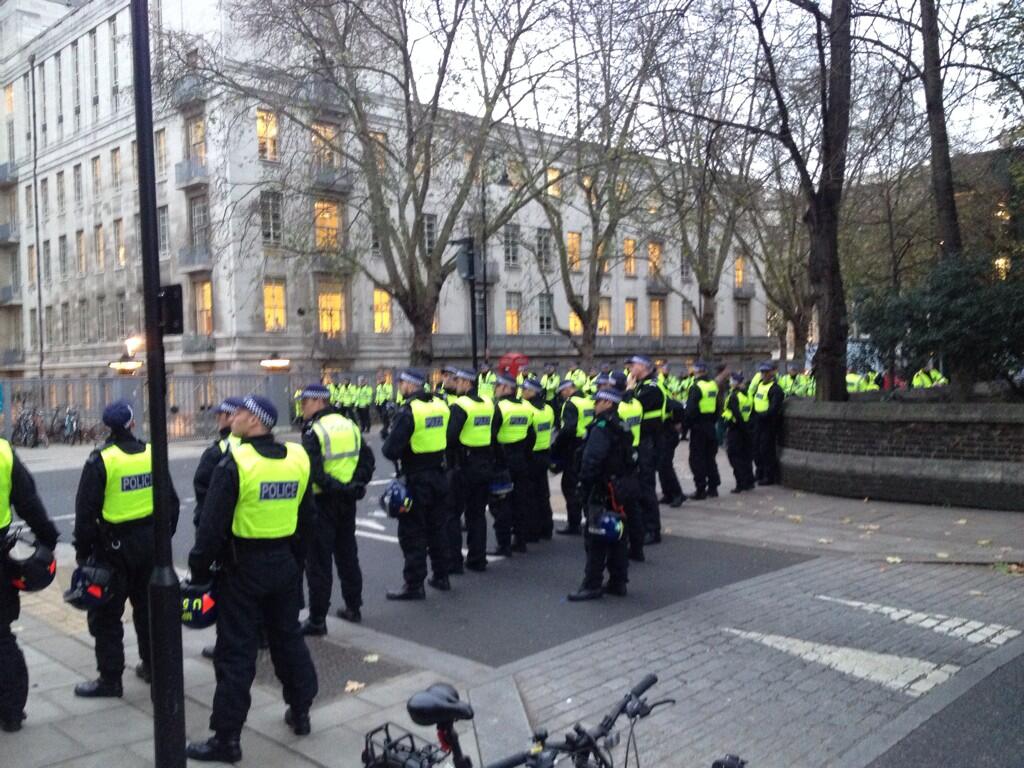a) Exploring populist descriptions of crowd behaviour, questioning whether the terms used are useful in describing what people actually do, and considering the implications of such descriptions
b) How irrationalist views of crowds can affect the ways in which they are policed & how people involved in collective action protests can often experience positive and lasting psychological change
c) How those affected by mass emergencies can (and should) be used as a potential resource in their aftermath as people co-operate to support each other and rebuild their communities in times of adversity
A critique of 'panic' narratives
I began the year by looking at how a fatal fire in a Brazilian nightclub was reported, and I argued that using 'panic' to describe people's behaviour as they evacuated seemed to be not only inaccurate, but also risked diverting attention away from the possible negligence of the building's owners, as the wrong kind of pyrotechnics were used, and the club only had one working fire exit. I also looked at tragedies at two religious festivals in India this February and October, and argued that describing the crowds' actions as 'stampedes' could serve a similar purpose by blaming the 'crazed' behaviour of pilgrims rather than what looked like woeful crowd mismanagement on the part of the Indian authorities.
In May a paper I co-wrote with John Drury on the 1989 Hillsborough football disaster was published. In it, we explored how survivors of the disaster often used the term 'panic' to describe their experiences, despite clearly having good reason to reject the irrationalist implications that go along with such usage (the 2012 Hillsborough Independent Panel report concluded that fans were not responsible for the disaster, thus dispelling a controversial myth that had previously been propagated by some aspects of the media). We concluded that this was a good example of how people in such situations can be constrained by the language available to them, and that this was yet more evidence to show that the word 'panic' is inadequate to describe how people behave in such emergencies. Furthermore, use of this term in social discourse can encourage crowd management that views crowds from a public 'order' rather than public safety perspective, and the Hillsborough disaster is a tragic case of what can happen if crowd events are considered in this way.
In November, Typhoon Haiyan struck the Philippines, and the media were quick to talk about fears of the breakdown of law and order, freely using terms such as 'looting', although they presented little evidence to support this. I felt this was re-hashing clichéd narratives about how communities are supposed to descend into 'lawlessness' after natural disasters, and pointed out that there was similar reporting when Hurricane Katrina hit New Orleans in 2005, despite the fact that detailed investigations afterwards concluded that reports of such lawlessness were often vastly exaggerated, and crime rates tend to drop after such incidents.
Most recently, accounts from those who witnessed the recent collapse of the ceiling of Apollo Theatre in London's West End, showed quite well how people can co-operate in such situations, with existing social attachment bonds between family members and friends remaining. I also argued that people would also co-operate to help strangers in emergency evacuations, as a common identity often emerges in the face of a shared threat which encourages co-operation rather than selfish behaviour. This post was mentioned in an article in the Guardian, which massively increased hits on my blog, and quickly made it the most widely accessed post I have written so far.

The 1989 Hillsborough football disaster
Public order policing
In January, I had a paper published that looked at how the use of indiscriminate public order tactics (such as 'kettling' to contain crowds or charges to disperse them) could escalate rather than reduce crowd conflict because it psychologically united crowd members against a shared threat. Later in the year, there were marches in Brighton and London by the far-right English Defence League, and I looked at how such events can attract clashes in views of legitimacy which can result in actual physical clashes between opposing sides and/or the police. However, I also argued that the police's sometimes rather selective use of public order legislation (such as the 1986 Public Order Act) can exacerbate mutual distrust if there is a perception that opposing groups are being treated differently and make further conflict more likely. I also argued that the acquittals of two students charged with violent disorder after their involvement in the 2010 tuition fee protests, were good examples of how public order legislation is often underpinned by outdated irrationalist views of crowd behaviour.
The summer saw anti-fracking protests in Balcombe, West Sussex, and I looked at how those involved could develop a wider sense of collective identity that goes beyond the specific local issue they were protesting about, how there can be differing views of legitimacy between the protestors and the police, and how their measures of success could also go beyond the specific protest itself. Similar psychological processes also seemed apparent during student protests in England in March and December, and I argued that while the campaigns could be initially inspired by a specific issue, they could often grow into covering wider issues relating to Higher Education (and beyond), and even extend into a debate about the right to protest itself.

Police 'kettle' anti EDL protestors September 2013
First Responders
The final area I looked at was how those directly affected by mass emergencies are often best placed to respond in the immediate aftermath before outside help from first responders arrives. Therefore, they could serve as 'zero-responders', and this is a valuable potential resource that should not be overlooked in such situations. The attack on the Westgate shopping mall in Kenya this September showed how in this situation where first responders were delayed in reaching victims, uninjured bystanders helped others to escape, tend to the wounded, and in some cases, even lead security forces back into the Mall to locate other survivors.More recently, the Glasgow helicopter crash in November was a classic example of how people often rush into to emergency situations (instead of rushing away to reach safety) to help those in need, and the only people who seemed surprised about this were the journalists who had turned up to cover the story! Finally, when Lee Rigby's attackers were found guilty of his murder this December, I argued that this contradicted early psychological research that suggested bystanders were apathetic to others in need, and that in the right situations, people would intervene to help others.

Bystanders to Lee Rigby's murder intervene to confront the attackers before 1st responders arrive
References:
Cocking, C. (2013) Crowd resilience during the 7/7/2005 London Bombings: Implications for the Emergency Services. International Journal of the Emergency Services. 2 (2) 79-93.
Cocking C. (2013) Crowd flight during collective disorder- a momentary lapse of reason?Journal of Investigative Psychology & Offender Profiling. 10 (2) p.219-36. DOI: 10.1002/jip.1389
Cocking, C (2013) Collective resilience versus collective vulnerability after disasters- a Social Psychological perspective. In R. Arora (ed.) Disaster Management: A Medical Perspective.
Cocking, C. & Drury, J. (2013) Talking about Hillsborough: ‘Panic’ as discourse in survivors’ accounts of the 1989 football stadium disaster. Journal of Community and Applied Social Psychology. DOI: 10.1002/casp.2153.


